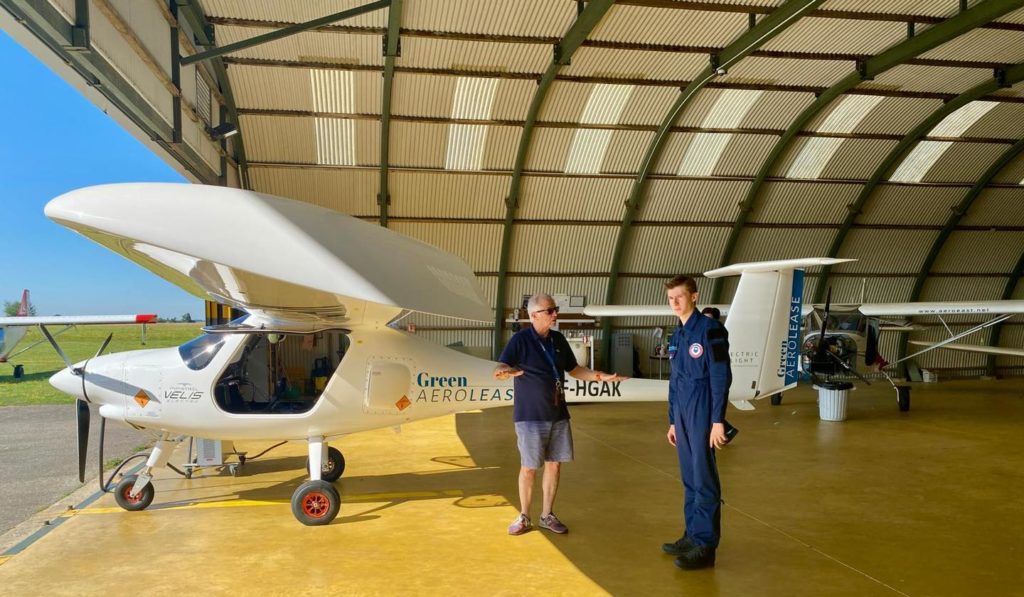An Exponential Need for New Pilot Training
A Large Number of Professional Pilots to Be Trained in the Coming Years
For aviation, the beginning of the decade was marked by a sharp drop in activity. However, since 2022, air traffic has been growing again and is gradually returning to pre-pandemic levels. In this context, pilot recruitment has become a strategic challenge for airlines. According to the 2023 CAE report entitled “Aviation Talent Forecast”, the need for new pilot training by 2032 exceeds 284,000 pilots! For general aviation stakeholders, this new outlook represents not only a genuine growth opportunity, but also an opportunity for transition.
Airline Pilot Training Is a Long Process, Broken Down into Several Stages
The PPL
The very first step is obtaining the PPL (Private Pilot Licence). This licence allows private flying on light single-engine aircraft. It forms the foundation of all future airline pilot training. During this stage, the student pilot acquires the essential basics of flying, navigation, flight management, and air safety. A minimum of 45 flight hours is required to obtain the Private Pilot Licence.
The CPL
Next, the pilot must obtain the CPL (Commercial Pilot Licence). This training of about 150–200 hours grants access to professional pilot status and authorizes remunerated flying. It includes the “time building” necessary to gain the required experience for further training, crew cooperation, and deeper understanding of flight operations.
The IR
Finally, an Instrument Rating (IR) is essential to fly in degraded weather conditions. It allows the pilot to operate without external visual references, relying solely on the aircraft’s flight instruments. This stage accounts for approximately 50 flight hours.
The Environmental Impact of Pilot Training Is Very High (41 Tons per Professional Pilot)
For a PPL on a conventional thermal aircraft such as the DR400, C152 or PA28, CO₂ emissions amount to 4,050 kg of CO₂ (45 flight hours, each emitting 90 kg of CO₂).
For a CPL on aircraft such as the TB20, PA28, C172, DA40 or DA42, CO₂ emissions amount to 30,000 kg of CO₂ (200 flight hours, each emitting 150 kg of CO₂).
For IR training on aircraft such as the TB20, PA28, C172, DA40 or DA42, CO₂ emissions amount to 7,500 kg of CO₂ (50 flight hours, each emitting 150 kg of CO₂).
The training of the future 284,000 professional pilots is therefore expected to generate 11.6 million tons of CO₂ emissions by 2032.
Objective: Net Zero-Emission Pilot Training
With new propulsion technologies, it is now possible to train airline pilots with a significantly lower environmental impact compared to today’s conventional methods. More than 500 private pilots in Europe have already chosen to obtain their licence on an electric aircraft: find out more in our article Integrating the Velis Electro into PPL Training: What You Need to Know.
Maximizing the Use of Electric Aircraft in Pilot Training Programs
There is one electric aircraft already in use today for pilot training: the Pipistrel Velis Electro. This aircraft emits around 90 kg less CO₂ per flight hour than an equivalent piston-powered aircraft. The two-seater is quiet, sleek, and highly demonstrative, making it an excellent training aircraft. Students can learn on a high-performance aircraft in a calm environment. Approximately 24 of the 45 required flight hours for the PPL can be completed on this aircraft.
Offering “Eco” Thermal Aircraft (at least 50% lower CO₂ emissions) as a Complement
For the later stages of the PPL training and longer flights—around 15 hours—new, lighter aircraft are now available, featuring modern and efficient Rotax engines. A Rotax engine emits about 45 kg of CO₂ per flight hour, which is 50% less than the engines most commonly used today! Furthermore, these emissions can be offset through the Aero4Good initiative.
Offsetting Remaining CO₂ Emissions Through Voluntary Compensation
Today, technological innovation does not yet allow all professional pilot training flights to be carried out with electric aircraft. In the meantime, voluntary carbon offsetting has become common practice in many companies. Aero4Good’s idea is to direct the funds generated by aviation’s CO₂ emissions towards aviation stakeholders who can already operate 100% electric flights. The aim of this initiative is to lower the operating costs of electric aircraft and make them accessible to as many people as possible.
The Green Aerolease Hybrid Offer Reduces Emissions by 72%
By combining electric aircraft, fuel-efficient thermal aircraft, and voluntary carbon offsetting, the solution offered by Green Aerolease makes it possible to reduce up to 72% of the CO₂ emissions generated during PPL training.
Green Aerolease: Actively Supporting the Transition in Pilot Training
We help flight schools and aeroclubs seamlessly integrate these solutions into their programs thanks to our all-inclusive leasing service:
- Provision of electric and low-carbon thermal aircraft: our fleet
- Maintenance included, ensured by our network of partner workshops
- Airworthiness monitoring
- Operational support for integration into the training syllabus
- Guidance on carbon offsetting through Aero4Good
Our mission: to make low-carbon pilot training accessible, without compromising on educational quality.
